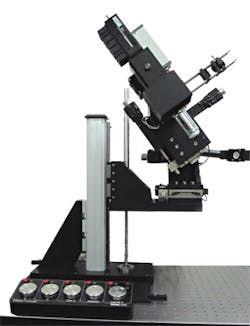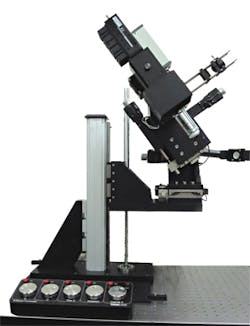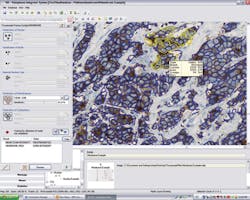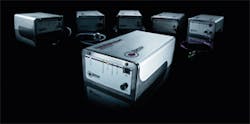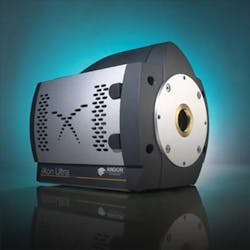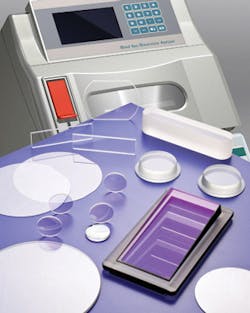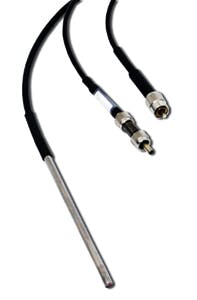Components Systems & Products
Compiled By LEE MATHER
Please send your new product announcement to [email protected]
Multiphoton imaging system
The B-Scope multiphoton imaging system provides over 254 mm of coarse travel in the z-axis and can rotate, enabling imaging of moving animals. To accommodate experiments requiring a rotation of the imaging plane, the entire optical system pivots around an arc near the focal point of the objective. The system also offers fine control in x, y, z, and the rotation t (±25°) through an optically encoded, closed-loop feedback system.
Thorlabs, Newton, NJ, http://bit.ly/zdQY2y
Cell analysis software
Enabling quantitative cell analysis in cancer research, clinical research, and pathology, TissuemorphDP image analysis software detects and classifies cell nuclei, cytoplasm, or membrane. The software tool, designed by Visiopharm, allows users to control detection of cell structures via manual control of sensitivity and size. Able to customize thresholds for positivity for cell nuclei, research findings are stored electronically as user-defined protocols.
Olympus, Center Valley, PA, http://bit.ly/wX18FR
Ultrafast fiber lasers
The FemtoFiber smart ultrafast fiber lasers cover wavelengths from 780 to 1560 nm for applications such as nonlinear microscopy. Output powers range from >0.5 to 100 mW, with 20-100 MHz repetition rates. Also, the FemtoFiber pro family provides less than 40 fs and more than 180 mW at 1570 nm.
Toptica Photonics, Graefelfing, Germany, http://bit.ly/yvRDak
EMCCD camera
The iXon Ultra EMCCD camera offers a 512 × 512 back-illuminated sensor that delivers a maximum frame rate of 56 fps. The company's Cropped Sensor Mode further boosts frame rates from a user-defined sub-region. A Camera Link output enables direct interception of data for 'on the fly' processing in applications such as adaptive optics. Additional applications include single-molecule detection and super-resolution microscopy, among others.
Andor Technology, Belfast, Northern Ireland, http://bit.ly/Ajga0p
Broadband light sources
EBS4C32, EBS8C33 and EBS4C34 broadband light sources offer centered wavelengths of 1020, 1040, and 1075 nm. With typical 3 dB bandwidths well above 100 nm and optical output powers of >15 mW, applications for the light sources include optical coherence tomography (OCT), biomedical imaging, or spectroscopy applications that require a light source in the near-infrared.
Exalos, Zurich, Switzerland, http://bit.ly/wLIoxa
Sapphire optics
A range of chemically inert, custom sapphire optics transmits from the UV through 4.7 μm for use in blood gas monitors and other medical devices. Available as windows, flat and stepped, concave or convex, and round or square, with holes and slots, the optics can be coated for up to >99% transmission, depending upon thickness. Specifications include flatness to 1/10th wave, parallelism to 2 arcsec, and surface finishes to <0.5 nm.
Meller Optics, Providence, RI, http://bit.ly/zJSPX8
Fiber-optic Raman probe
The BAC200 fiber-optic Raman probe delivers the performance of a larger Raman probe, but in a <4 mm diameter for molecular-level spectroscopy. Its design, which features a fused silica tip housed in a stainless-steel needle tube, enables both immersion and direct contact measurements. The probe's optical elements are permanently fixed in alignment, eliminating movement due to impact or vibrations.
